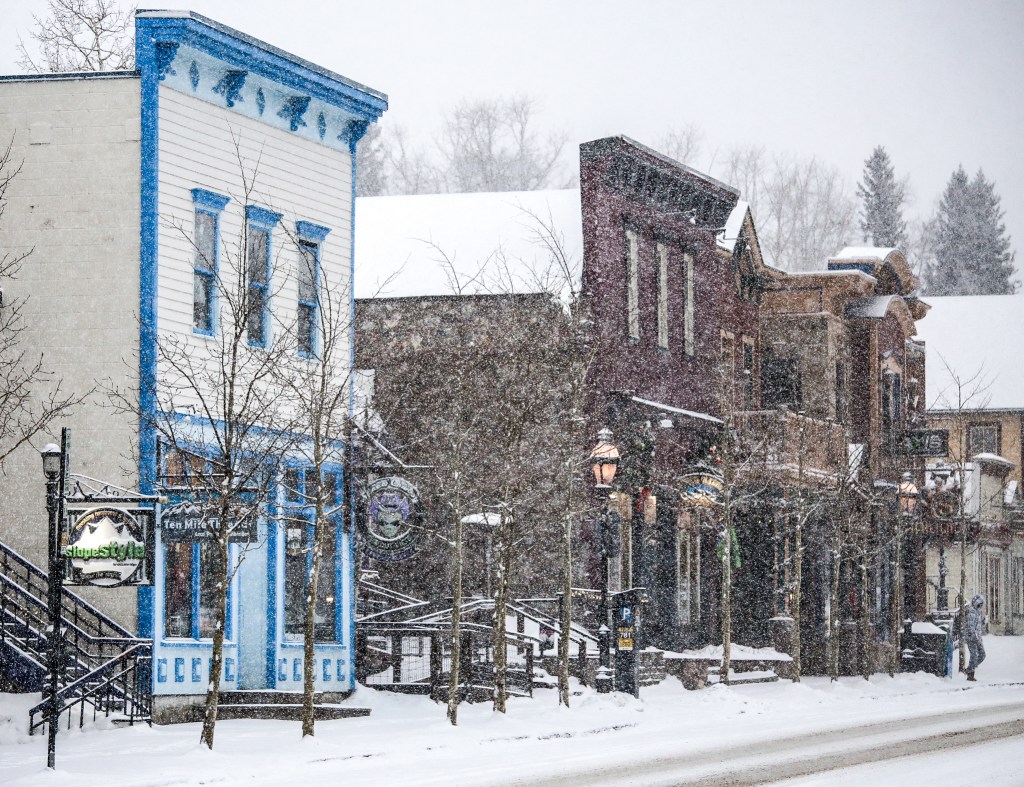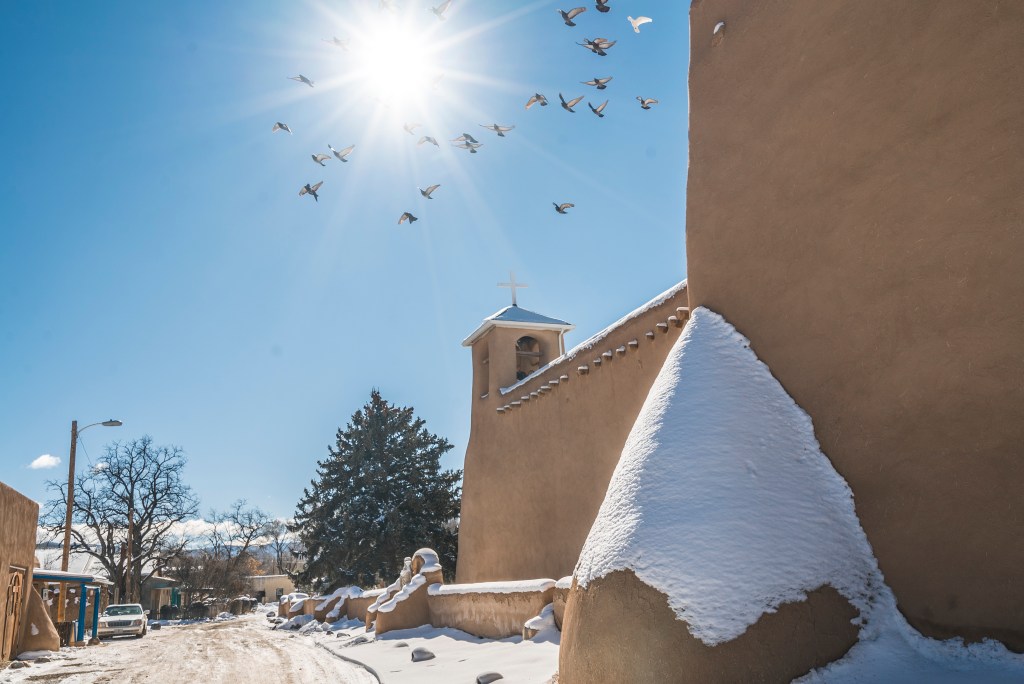For the last 15 years, Cheryl Paduano and her husband, Tony, have owned the Soda Springs Store, a quaint general store on the typically snow-drenched Donner Pass, in California’s Sierra Nevada. Cheryl recently looked through the store’s profits and losses over the last decade and found a direct correlation between better profits and deeper snow.
“This is our worst winter in the last seven years. We’re down 42 percent from last year,” Cheryl said, citing Tahoe’s low-snowfall season this year, compared to last year’s record-breaking winter and four years of drought prior to that, as the main cause for the dip.
She estimates 75 percent of their customers stop into the store to pick up grocery staples or take-and-bake pizzas on their way to or from one of the area’s five ski areas, including Sugar Bowl, Boreal, Donner Ski Ranch, Soda Springs and Royal Gorge, a cross-country ski area.
When the snow doesn’t fall, people don’t go skiing—and they don’t shop at the Paduanos’s store. “We’ve had so many bad years that my accountant finally said, ‘You’d better raise your prices, cut your staff or do whatever you can. This is serious,’” Cheryl said.

The town of Breckenridge suffers when the snow doesn’t come. Photo Credit: Breckenridge Tourism Office.
This idea that more snow translates to more money in mountain communities that rely on the ski and snowboard industry is the subject of a new study released last Friday from Protect Our Winters (POW), the nonprofit organization started by snowboarder Jeremy Jones in 2007. The Paduanos are featured as a case study in the report.
“Our hope is that this report will serve as a rallying cry for the outdoor sports community,” says Mario Molina, executive director of Protect Our Winters. “Pro athletes, brands, industry and participants coming together to leverage our economic contribution [would let] decision makers and political leaders know that you can’t claim to care about jobs and stall on climate when there are over 17,000 jobs that can be saved by taking significant steps toward carbon reduction now.”
POW first debuted an economic impact study with the Natural Resources Defense Council in 2012, finding that winter sports tourism generated $12.2 billion from the 23 million Americans who participate in winter sports each year. That first study also found the ski resort industry was suffering a loss of about $1.07 billion in revenue between high and low snow years from the previous 10 years.
First, some numbers. The new study, an update from the 2012 version, found that although the number of people who participate in snowsports remains relatively steady—some 23.5 million Americans participated in winter sports in the 2015–2016 season, according to SnowSports Industries America—the actual skier visits, in days, fluctuates dramatically, going from a high of more than 60 million in 2008 to a low of under 50 million in 2012, often following the curve of recent snowfall. That change has a big impact on business. Not just at ski resorts but at the hotels, restaurants, bars and shops those skiers patronize during their visits.
It also has a big impact on skiers and snowboarders—shorter seasons mean fewer days on snow. Plus, smaller ski resorts without snowmaking capabilities could struggle to stay open. According to the report, the number of ski areas in the U.S. has been declining since the 1980s, from about 700 resorts three decades ago to 460 today.
“I prefer to get out when there’s more snow,” Molina says. “We don’t need a report to tell us that, but we just tried to quantify it.”
The new POW study found that those millions of skier visits added $11.3 billion in economic value in the 2015–2016 season. In Colorado alone, the snowsports industry helps create some 43,000 jobs and added $2.56 billion to the state’s economy in 2016. In heavy winters with higher visitor days, the study reports an added $692.9 million and over 11,800 extra jobs created across the country, compared to average winters. In low snow years, fewer visitors mean a decreased value of $1 billion and a loss of 17,400 jobs, compared to average snow years.

Caroline Gleich wants winters to stay snowy. Photo Credit: Andrew Burr/Patagonia
“These kinds of numbers—it’s sobering information,” says pro skier Caroline Gleich, a Protect Our Winters athlete ambassador since 2010. “But it puts climate change into a quantifiable thing and makes it easier for people to grasp. When you realize there are real people and families who depend on snow for their livelihood, it humanizes the cause, and that’s what we need right now in order to get people to listen.”
But what do these numbers mean in real life? How are people and businesses truly being impacted? Take Taos, New Mexico. Taos Ski Valley has received just over 50 inches of snow this season (on average, they get 321 inches a winter) and while they’ve been producing snow to make up for nature’s deficit, much of the mountain remains closed. That means fewer opportunities for skiers and snowboarders to get out and fewer dollars spent at local restaurants and hotels.
“Snow is coming later in the season and our weather events are more radical, and that does impact our business,” says David Norden, CEO of Taos Ski Valley. “This year, we had a significant decrease in snowfall early in the season, so there was this feeling in the marketplace that we had no snow. For us that means decreased visitation and decreased revenue.”
Norden says they’ve had to relocate staff to other positions and cut jobs to make up for the lower visitor numbers. He says the mountain, which is in the midst of a revitalization with a new hotel and other major upgrades, is also beefing up its summer offerings, promoting off-season activities like guided hiking, mountain biking and fly-fishing. “Taos was typically a ski area that closed down in the summer and opened back up the following winter,” Norden says. “But now we’re looking into becoming a four-season resort and reminding people that they can come to Taos and enjoy mountain fun any time of the year—snow or no snow.”

Taos, New Mexico, is revamping itself as a four-season destination. Photo Credit: Taos Ski Valley.
In Breckenridge, Colorado, the impact of warmer, shorter winters may not be visible immediately, says Breckenridge mayor Eric Mamula, who owns a pub on Breck’s Main Street called Downstairs at Eric’s. “The thing I worry about is next season: People who came here in December and the snow wasn’t great, do they decide they’re not going to take a chance on next year?” Mamula says.
Plus, Mamula adds, the winters are getting shorter and the typically less-crowded shoulder seasons are getting longer, which is causing a drop in revenue. “It’s a concern that the ski season is now a whole month shorter,” Mamula says. “It used to be that people skied from Thanksgiving through April, and now, you never know what you’re going to get in November and April.”
The end of the POW study offers a list of pointers for ways you can make a difference when it comes to climate change, from writing letters to your local legislators, reducing your own carbon footprint by carpooling or buying a more fuel-efficient vehicle, and spending your dollars at resorts and businesses that are helping reduce the impacts of climate change.
And, adds Gleich, don’t forget to vote. “There are great resources to find out how different legislators vote on climate change and the environment,” Gleich says. “Become an informed voter—that’s your bare-bones duty.”
According to POW’s Molina, now is our chance to make a change. “Millions of us, across the political spectrum, are bound by a love of snowsports,” says Molina. “They provide us with the cultural glue of shared experiences in the mountains, help generate jobs and help the economy to thrive. We still have a short window within which to act and preserve winter. We have the numbers and the economic power to move the country to a clean-energy, low-carbon economy—let’s use it.”
Editor’s Note: Protect Our Winters is one of REI’s nonprofit partners, and REI helped fund the report, “The Economic Contributions of Winter Sports in a Changing Climate.”


